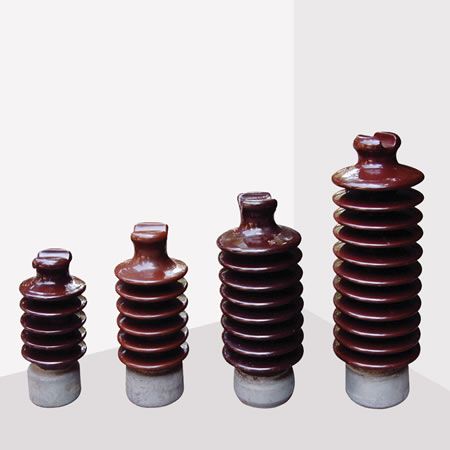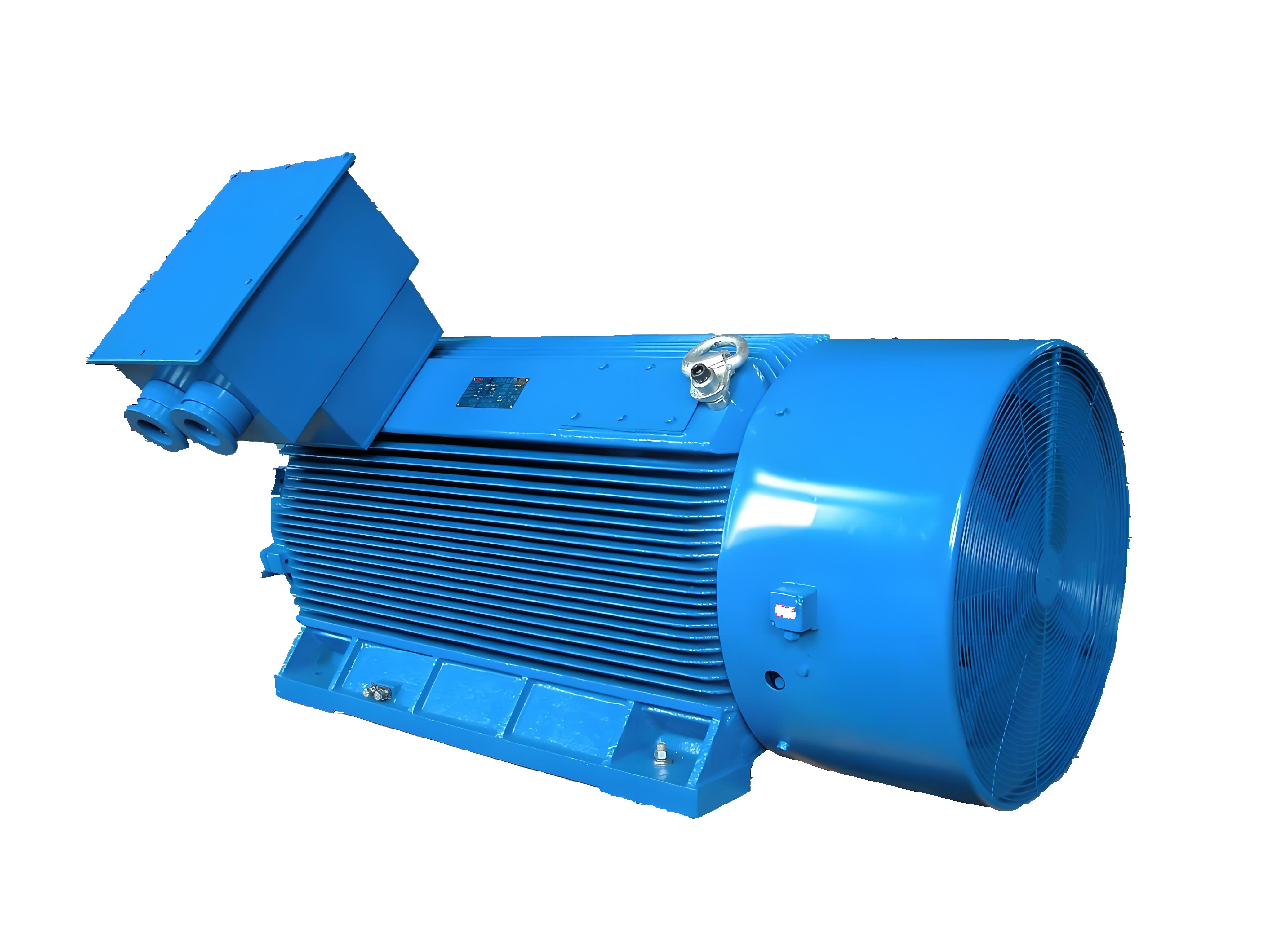How many types of insulators do you know?
There are many disc-shaped insulators hanging at one end of the high-voltage wire connection tower. They are usually made of glass or ceramic and are called insulators. Insulators are special insulating control components that can play an important role in overhead transmission lines. They are installed between conductors of different potentials or between conductors and ground potential components, and can withstand voltage and mechanical stress.
In the early days, insulators were mainly used for electric poles. With the development and needs of society, they were gradually applied to high-type high-voltage wire connection towers, mainly used to increase creepage distance (creepage distance refers to the short space distance between two conductive parts, or between a conductive part and equipment and easily accessible surfaces measured along the surface of the insulating material.)
Creepage distance = surface distance/system maximum voltage. Depending on the degree of pollution, the creepage distance in heavily polluted areas is generally 31 mm/kV.
Insulators have two basic functions in overhead transmission lines: supporting conductors and preventing current from returning to the ground. In order to ensure these two basic functions, insulators should not fail due to various electromechanical stresses caused by changes in environmental and electrical load conditions, otherwise it will damage the use and operation life of the entire line.
Insulators can be divided into the following types according to their functions and structures:
Suspension insulators
Used in high-voltage and ultra-high-voltage transmission lines to suspend or tension conductors and insulate them from the towers. Suspension insulators have high electromechanical strength and are suitable for various voltage levels and various strength requirements through different string groups, so they are currently widely used. Among suspension insulators, they can be divided into disc suspension insulators and rod suspension insulators.
Disc suspension insulators are divided into two categories: ordinary type and anti-pollution type. The ordinary type is suitable for general industrial areas. Compared with ordinary insulators, the anti-pollution type has a larger creepage distance and a shape that is easy to clean in wind and rain. When used in dirty areas, the size of the tower can be reduced, which has great economic value.
Rod-shaped suspension composite insulators can effectively use narrow corridors to open voltage and transmit electricity. They are suitable for urban network technical transformation, can reduce the height of the tower, and can save a lot of manpower, material and financial resources. Due to their high bending strength, they can prevent the cascade fracture accidents that are easy to occur in porcelain cross insulators. They are products that cannot be replaced by porcelain insulators.
2. Post insulators
Mainly used for insulation and mechanical fixation of busbars and electrical equipment in power plants and substations. In addition, post insulators are often used as components of electrical equipment such as disconnectors and circuit breakers.
Among post insulators, they can be divided into pin-type post insulators and rod-type post insulators. Pin-type post insulators are mostly used for low-voltage distribution lines and communication lines, and rod-type post insulators are mostly used in high-voltage substations.
Insulators made of electrical ceramics. Electrical ceramics are baked from quartz, feldspar and clay as raw materials. The surface of the porcelain insulator is usually covered with enamel to improve its mechanical strength, waterproof infiltration, and increase surface smoothness. Among all types of insulators, porcelain insulators are the most commonly used.
Further reading:Key Considerations to Keep in Mind When Choosing Linear Actuators
How to Select the Best Servo Motor Cables?
Translucent Artificial Panels: Bringing Infinite Possibilities to Interior and Exterior Decoration
Are Your Power and Control Cables Exceeding Performance Expectations?
What is a PUR Cable and Its Benefits?
Pur Cable vs. Standard Cable: Which One Reigns Supreme?
Maximize Efficiency with Drag Chain Cable Solutions
Insulators made of tempered glass. Its surface is in a state of compressive prestress. If cracks and electrical breakdown occur, the glass insulator will break into small pieces by itself, commonly known as "self-explosion". This feature makes it unnecessary to perform "zero value" detection on glass insulators during operation.
Zero-value insulators refer to insulators whose potential distribution at both ends of the insulator is close to zero or equal to zero during operation.
Impact of zero-value or low-value insulators: The insulation of the line conductor depends on the insulator string. Due to manufacturing defects or external effects, the insulation performance of the insulator will continue to deteriorate. When the insulation resistance is reduced or zero, it is called a low-value or zero-value insulator, which is another major reason for the high lightning trip rate of the line. The insulator is smooth and can reduce the capacitive reactance between the wires to reduce the loss of current.

5. Composite insulators
Also called synthetic insulators. Its insulating parts are composed of glass fiber resin core rods and organic material sheaths and umbrella skirts. It is characterized by small size, light weight, high tensile strength, and excellent anti-pollution flashover performance. But the anti-aging ability is not as good as porcelain and glass insulators.
Composite insulators include: rod-shaped suspension insulators, insulating crossarms, pillar insulators and hollow insulators. Composite bushings can replace porcelain bushings used in a variety of power equipment, such as mutual inductors, lightning arresters, circuit breakers, capacitive bushings and cable terminals. Compared with porcelain sleeves, it has the advantages of high mechanical strength, light weight and small dimensional tolerance, and can also avoid damage caused by explosion.
6. Low-voltage insulators and high-voltage insulators
Low-voltage insulators refer to insulators used for low-voltage distribution lines and communication lines. High-voltage insulators refer to insulators used for high-voltage and ultra-high-voltage overhead transmission lines and substations. In order to meet the needs of different voltage levels, different numbers of single insulators of the same type are usually used to form insulator strings or multi-section insulating pillars.
7. Pollution-resistant insulators
The main measure is to increase or enlarge the insulator shed or ridge to increase the creepage distance of the insulator to improve the electrical strength of the insulator in a dirty state. At the same time, the shape of the shed structure is changed to reduce the amount of natural pollution on the surface to improve the anti-pollution flashover performance of the insulator.
The creepage distance of pollution-resistant insulators is generally 20% to 30% higher than that of ordinary insulators, or even more. In areas where pollution flashover is frequent in China's power grid, pollution-resistant insulators with double-layer umbrella structures are used. This type of insulator has strong self-cleaning ability and is easy to clean manually.
8. DC insulators
Mainly refers to disc insulators used in DC power transmission. DC insulators generally have a longer creepage distance than AC pollution-resistant insulators, their insulating parts have a higher body resistivity, and their connecting fittings should be equipped with sacrificial electrodes to prevent electrolytic corrosion.
Top 10 Tips for Boosting Your Website's SEO in 2023
Stop the Frustration: Discover the Game-Changing Benefits of Flexible Ethernet Cable!
Waterproof Panel PC: A Durable Solution for Harsh Environments
9 pin d sub female connector pinout
Introduction to Open Source RFSOC Algorithm Verification Evaluation Board
Overhead Bunching Wire: Benefits, Uses, and Installation Tips Explained
Are Your Medical Interconnections Secure from Data Breaches?
Previous: How to Choose the Right Optic Cable Tension Clamp?
Next: What is the difference between an anchor bolt and an anchor fastener?
Related Articles
If you are interested in sending in a Guest Blogger Submission,welcome to write for us!



Comments
0